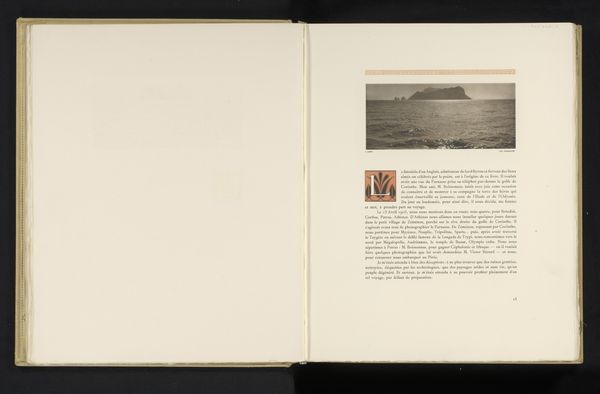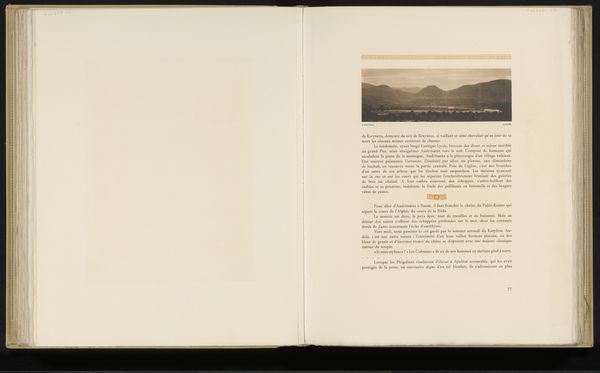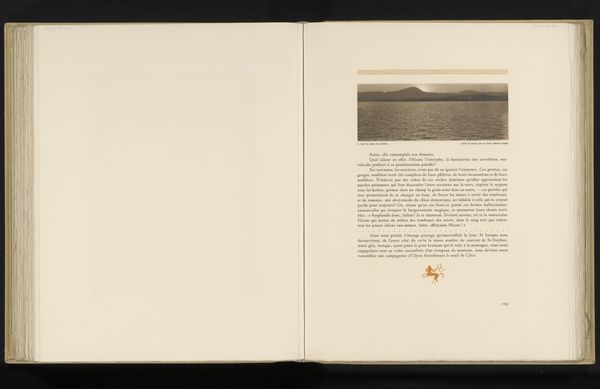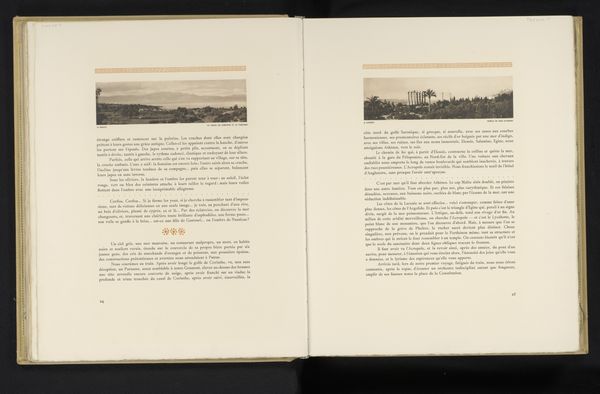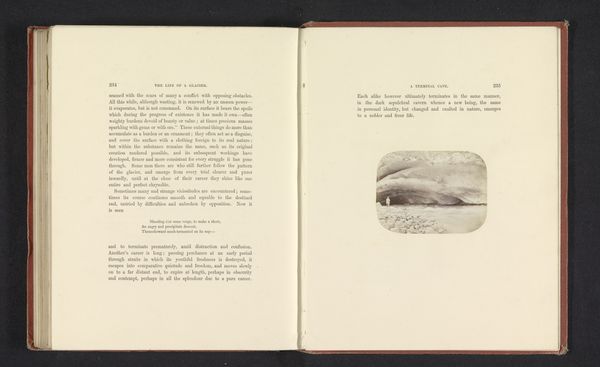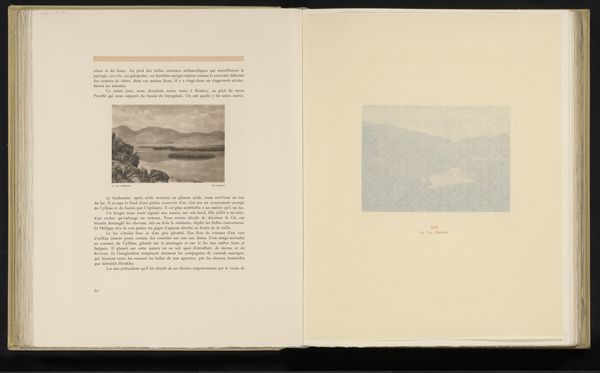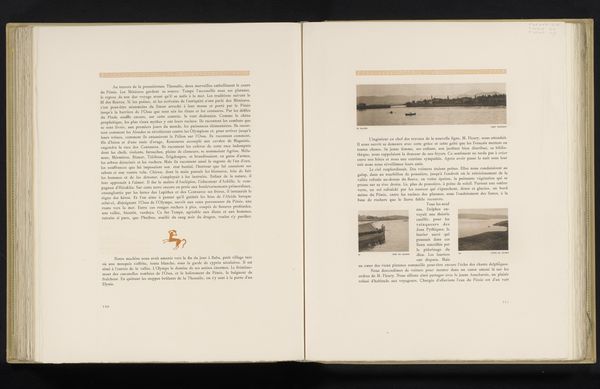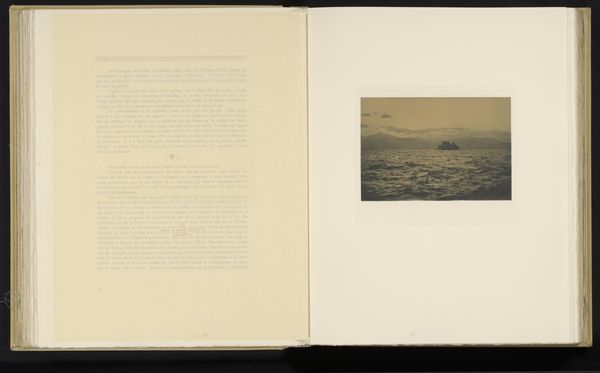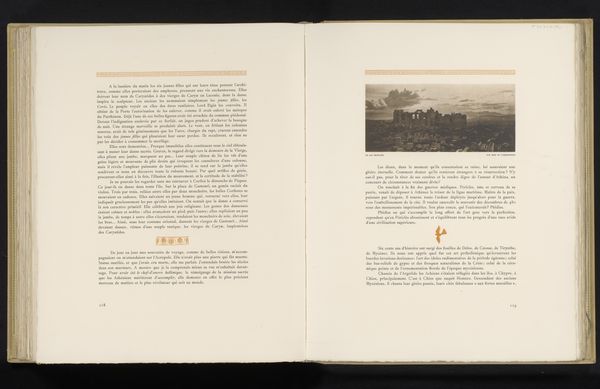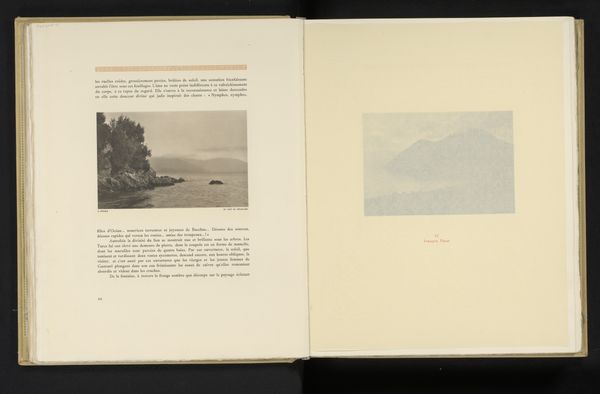
Dimensions: height 68 mm, width 223 mm
Copyright: Rijks Museum: Open Domain
Curator: Here we have a printed photograph by Frédéric Boissonnas, titled "Haven van Korfoe," dating from before 1910. What strikes you first about it? Editor: An immediate stillness. The misty grays and muted blues suggest a dreamlike quality, almost melancholic. There's a strong emphasis on horizontality; the land, the sea, and the sky all feel like stacked planes. Curator: Boissonnas was fascinated by light and its effect on landscape. What intrigues me is how this impressionistic image was reproduced as a print. Think about the technical constraints of photography at the time. This wouldn’t be a straightforward process; instead, it would require careful manipulation in the darkroom. Editor: It makes me wonder about the production methods and the social context for viewing photographs during this era. Was this meant for a mass audience, or for more exclusive art circles? How did this process challenge traditional art hierarchies by positioning photography among other forms of art and printmaking? Curator: Good points. The print process adds a layer of interpretation—a conscious mediation of the photographic reality. The graininess of the print itself becomes part of the aesthetic. Notice, too, that while ostensibly documenting Corfu's harbor, the choice of monochromatic tonality elevates the landscape above simple topography, guiding the viewer toward atmosphere. Editor: Absolutely. I find the focus on atmospheric quality captivating. Rather than striving for photorealistic detail, Boissonnas embraced a sort of blurring that emphasizes emotional resonance above concrete depiction. This aligns, thematically and materially, with Impressionism, challenging strict divisions between what's viewed as high art and the art of making. Curator: Exactly. In its visual language, there is certainly an echo of Impressionistic landscape painting. Considering both its aesthetic qualities and the constraints and capabilities involved in photographic printing processes before the First World War broadens our appreciation for Boissonnas’ practice. Editor: Agreed. The image becomes an interesting meeting point, merging aesthetic pursuits and commercial necessities, thus reshaping our understanding of early photographic landscapes as art.
Comments
No comments
Be the first to comment and join the conversation on the ultimate creative platform.
